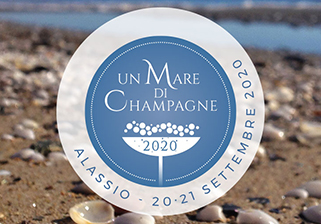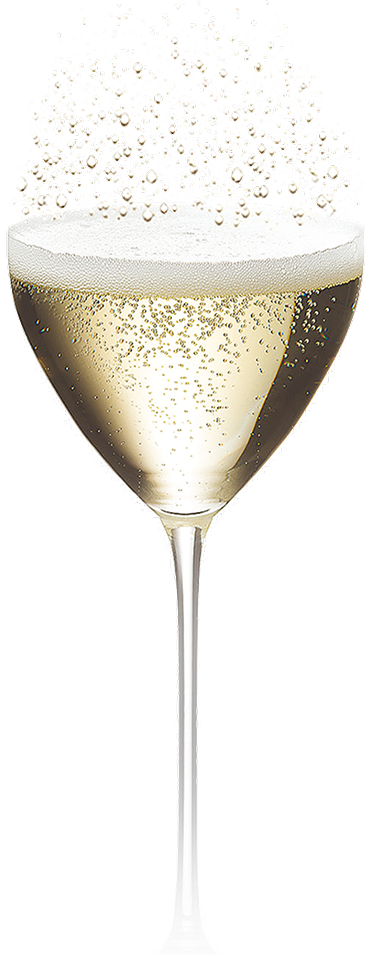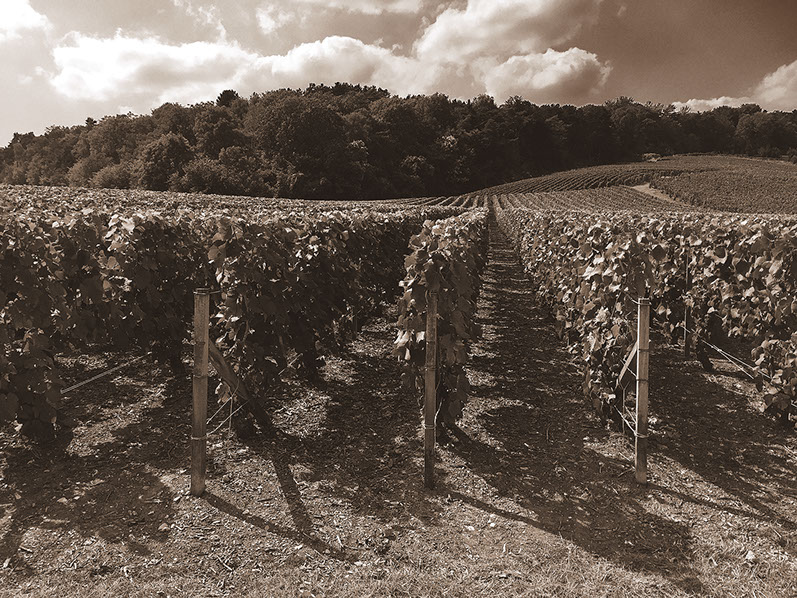
The Champagne region is 150 kilometres east of Paris boasting almost 35,000 hectares of vineyards divided up into 280,000 plots. The true secret of the Champagne area lies in its subsoil which is made up of chalk (craie), a calcareous-chalky stone of sedimentary origin. This creates the conditions for making the best wine in the world in an area where it would most probably be impossible to produce wine.
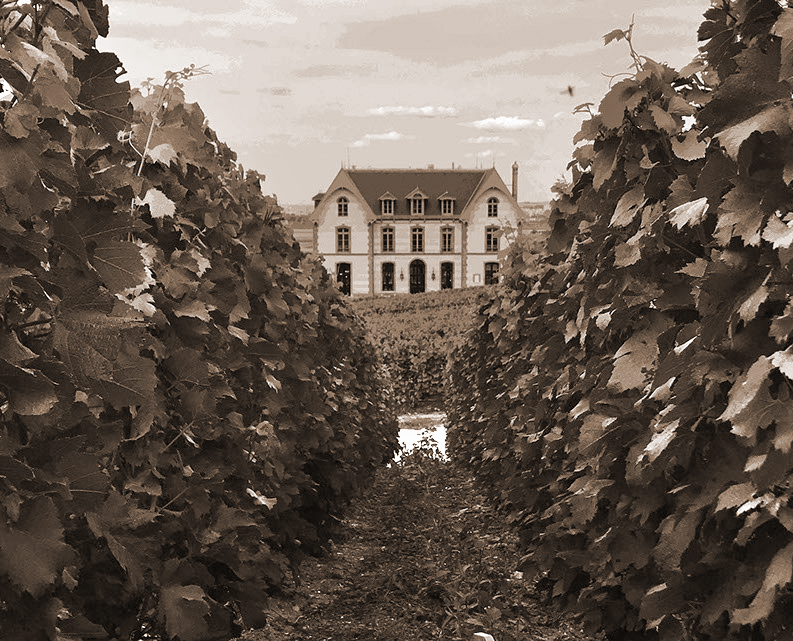
There are many different categories amongst the almost 4,700 producers in Champagne. Here we find the names of world famous producers (negociants). There are also the cooperatives that make up the largest category with 2,500 vintners. Finally, there are the so-called "small producers”, the RM (Récoltant-Manipulant) or better the growers, who only make champagne from the grapes they have grown. It is these growers who express the many facets of the Champagne terroir in a bottle!
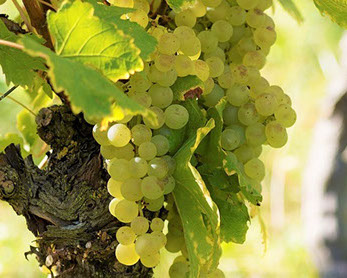
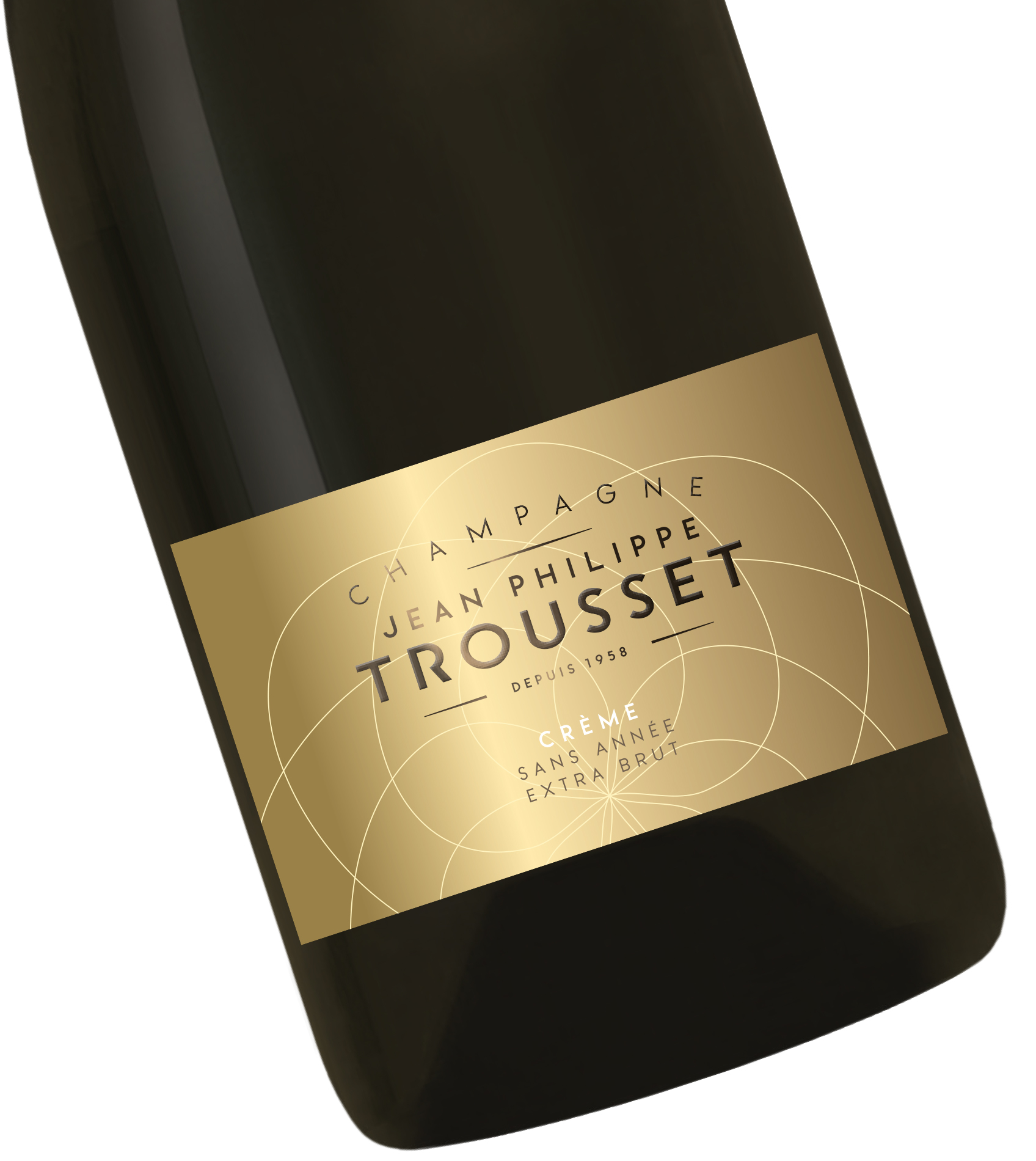
jean-philippe trousset
crème
GRAPES
50% Pinot Noir
19% Chardonnay
31% Meunier
The base is from the last harvest plus 45% reserve wines from the previous two vintages; 10% of the total is fermented in barrels. This champagne has been yeast fermented for about 22 months prior to being dosed at 3,5 g/l. A fresh and crisp champagne with the right level of fruitiness enhanced by a sweet yet delicate tone. Well balanced and full bodied with a linear character, it has a pleasantly citric aftertaste. It can be served as an aperitif or as a table wine.
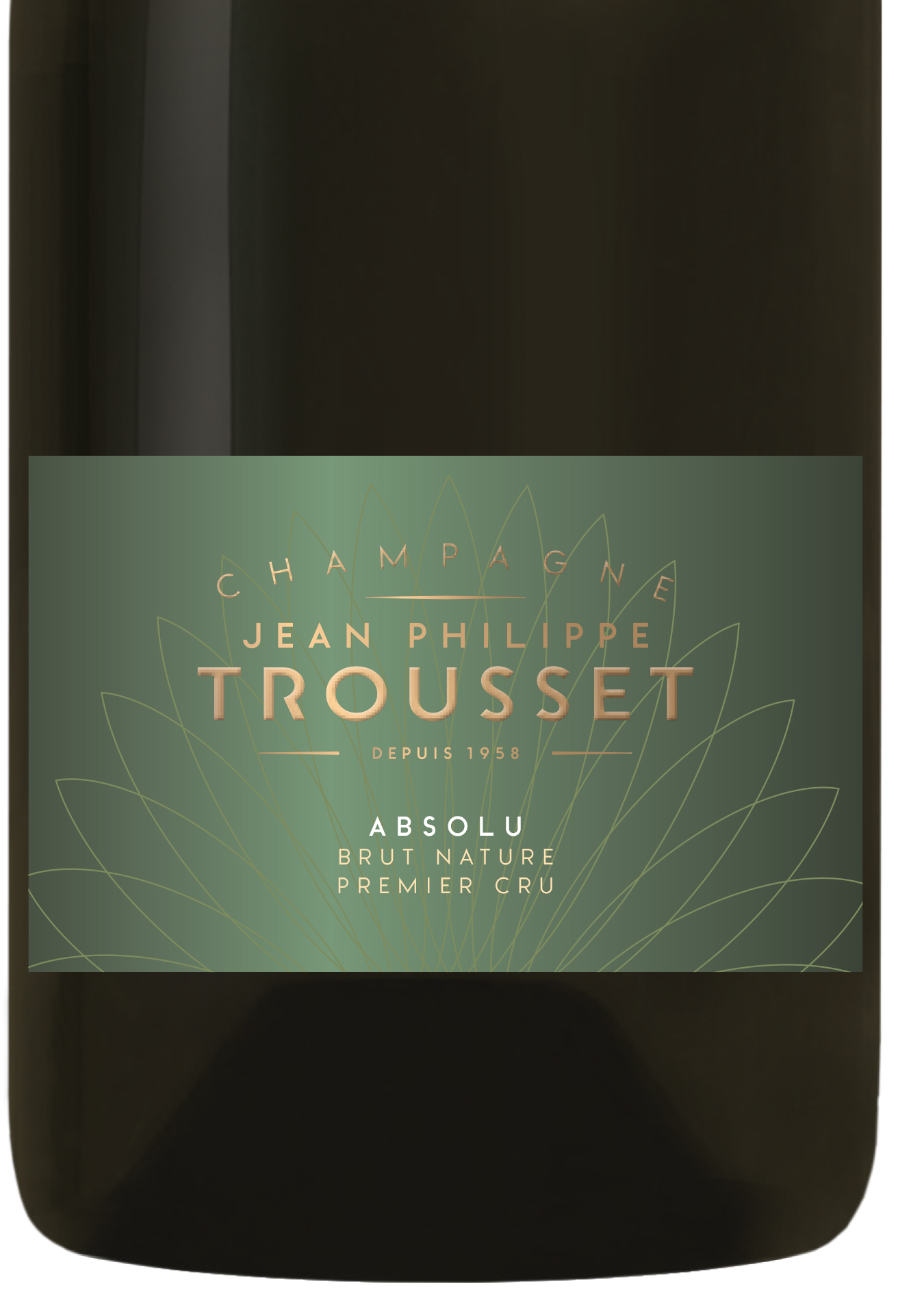
jean-philippe trousset
absolu
Cosa piuttoso rara in Champagne, si tratta della declinazione del classico extra brut (Crème) come pas dosé, a dimostrazione della bontà del vino. Pertanto, dal punto di vista tecnico, vinificazione e affinamento sono gli stessi del Crème. Di grande freschezza e con una sensazione agrumata e un tocco di frutta secca. Champagne brillante nella spiccata freschezza, nitido nella sua estrema pulizia, ma anche rotondo per via dell'ottima e ricca materia.
GRAPES
50% Pinot Noir
19% Chardonnay
31% Meunier
THE PRODUCER — Trousset-Guillemart is a small champagne grower in the foothills of the Reims Mountain and belongs to the independent producer category - the RM (technically the Récoltant-Manipulant namely those who only produce champagne from their own grapes).
THE ESTATE — The Guillemart family has lived in Sacy, a Premier Cru village, since the XVII century. In 1958, the Domaine Trousset-Guillemart was established and the estate consisted of 7,6 hectares located in three Premier Cru villages: Les Mesneux, Sacy and Villedomange.
THE CELLAR — In recent times, the owners Jean-Philippe and his wife Karine have built modern and efficient cellar where technology goes hand in hand with the méthode champenoise tradition targeted at quality excellence. Here a Coquard tilted plate press, stainless steel computer controlled thermo-regulated vats and an underground room where fermentation in 5 hectolitre wood barrels and barriques takes place and the bottles of champagne are aged.
THE VINEYARDS — The soil in all the Premier Cru vineyards is
clayey-chalky and sandy. Plants have an average age of 20 years. Today cultivation is characterized by sustainable viticulture using mechanical weeding and organic treatments. After gentle pressing, the first pressing juice (cuvée) is fermented partly in stainless steel and partly in wood. Before bottling, the wines are cold stabilized and lightly filtered. Once the tirage has been completed, the champagne is kept on yeast from around 2 to 5 years. The final dosages are from 3.5 g/l maximum to zero. Trousset-Guillemart produces around 72.000 bottles a year.
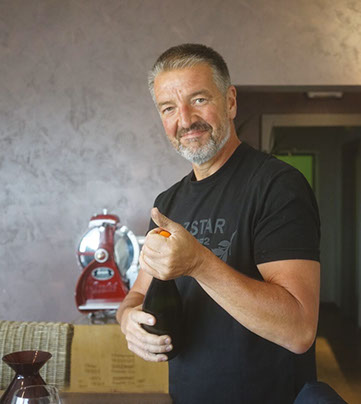
producer
jean-philippe trousset
The two most "noble" grape varieties are blended to create a perfect balance. 100% fermented in stainless steel without malolactic fermentation followed by three and a half years of yeast fermentation and an extra-brut dosage. A very elegant champagne where the richness of the ingredients does not affect its freshness or clean taste. Lively and intense with a fruity taste leaving a rewarding burst of minerality in the aftertaste. It can already be drunk today but this champagne will greatly improve with ageing.
tjean-philippe trousset
millésime
GRAPES
50% Pinot Noir
50% Chardonnay
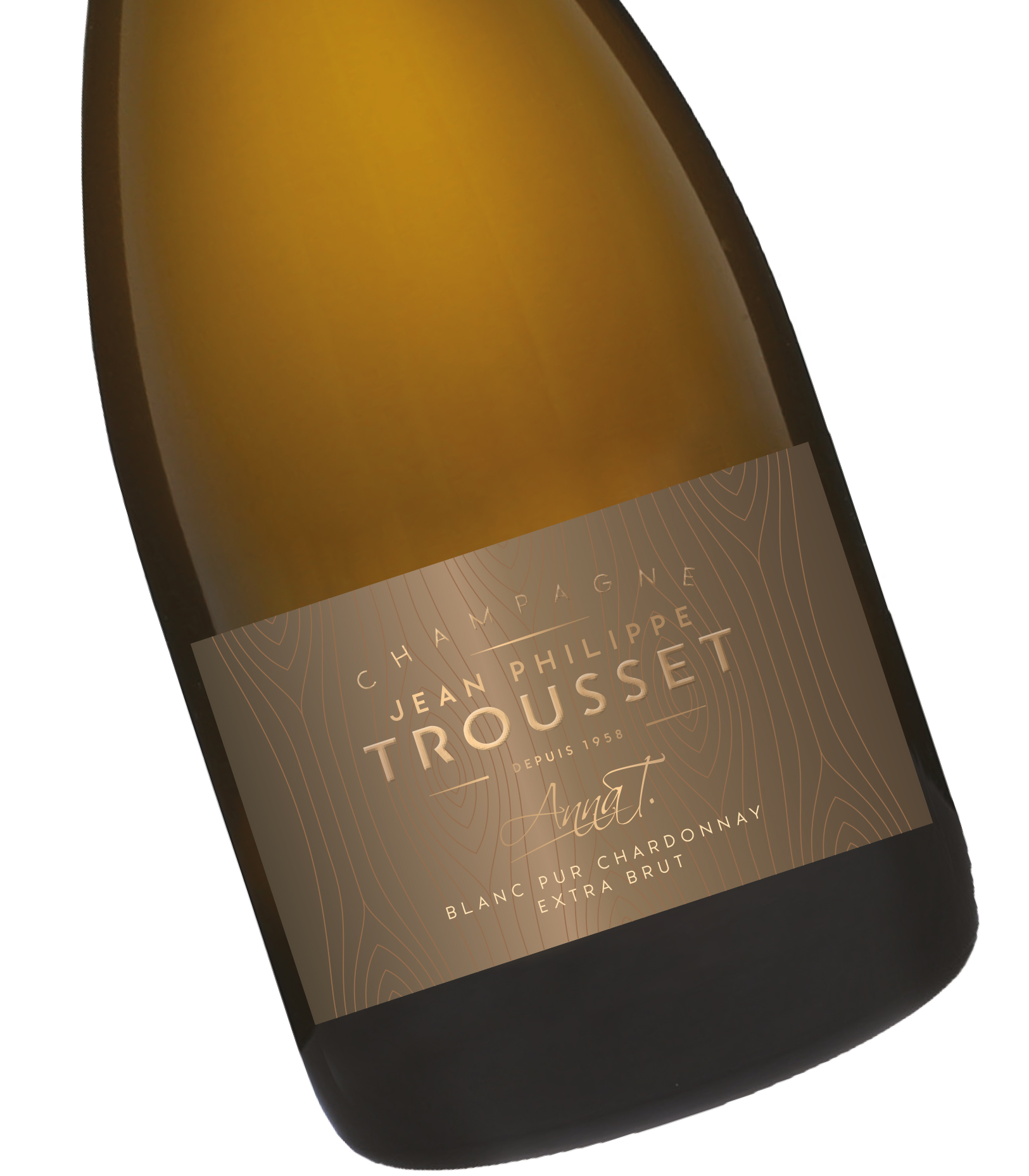
jean-philippe trousset
anna t.
White grapes from a single plot of Sacy exclusively fermented in wood (small casks and barrels) with full malolactic fermentation. This is the fruit of 80% of the wines using the Solera system since the 2009 vintage which has been stored in a special cask together with part of the wines from the last vintage. Then comes three and a half years of yeast fermentation. A complex champagne in the style of the producer and, as such, with a fresh and clean taste that is also smooth and rich. Bursting with personality it mediates between a white Bourgogne and the essence of champagne. And the cherry on the cake is the absence of dosage which underpins the goodness of this small gem.
GRAPES
100% Chardonnay
jean-philippe trousset
les croisettes
Millesimato (2013) non dichiarato a dispetto della lunga maturazione sui lieviti (5 anni) bouchon liège. I mosti sono stati fermentati in cuve e la malolattica svolta. Ne sono state tirate soltanto 621 bottiglie, proposte come pas dosé. Compatta eleganza per poi virare verso la mineralità iodata e note affumicate, il tutto su una base agrumata. Bella bocca, succosa, nitida, ampia, avvolgente sapendo anche essere elegante, levigata e pulitissima.
GRAPES
46% Chardonnay
3% Arbanne
51% Petit Meslier
jean-philippe trousset
nuit blanche
The grower has selected the grapes from the soil of the Trousset family's historic plots halfway down the hill in the Premier Cru village of Sacy. Fermentation takes place in stainless steel vats at a controlled temperature and includes the use of malolactic fermentation however, the wines from the last vintage are then added to those of the perpetual reserve kept in casks since 2014. This champagne is yeast fermented for over two years and has a sugar residual of less than 1,20 g/l and all the characteristics of a brut nature. The champagne is fresh and lively with notes of small red fruits and flowers with a base of minerality.
GRAPES
100% Pinot Noir
jean-philippe trousset
rosé
A blend with the highest level of Chardonnay to compensate for the vinosity of Pinot Noir, especially the red one. It is the fruit of the last vintage plus 45% of reserve wines from the previous two vintages then two years of yeast fermentation and extra brut dosage less than 2,5 g/l. An elegant rosé created from the red citrus fruits and the fruit giving it a fresh, lively and crisp flavour. It is a subtle rosé, combined with a soothingly fresh and brilliantly clean taste making it ideal as an aperitif or as a table wine.
GRAPES
50% Pinot Noir di cui
l'8,5% in rosso
35% Chardonnay
15%% Meunier
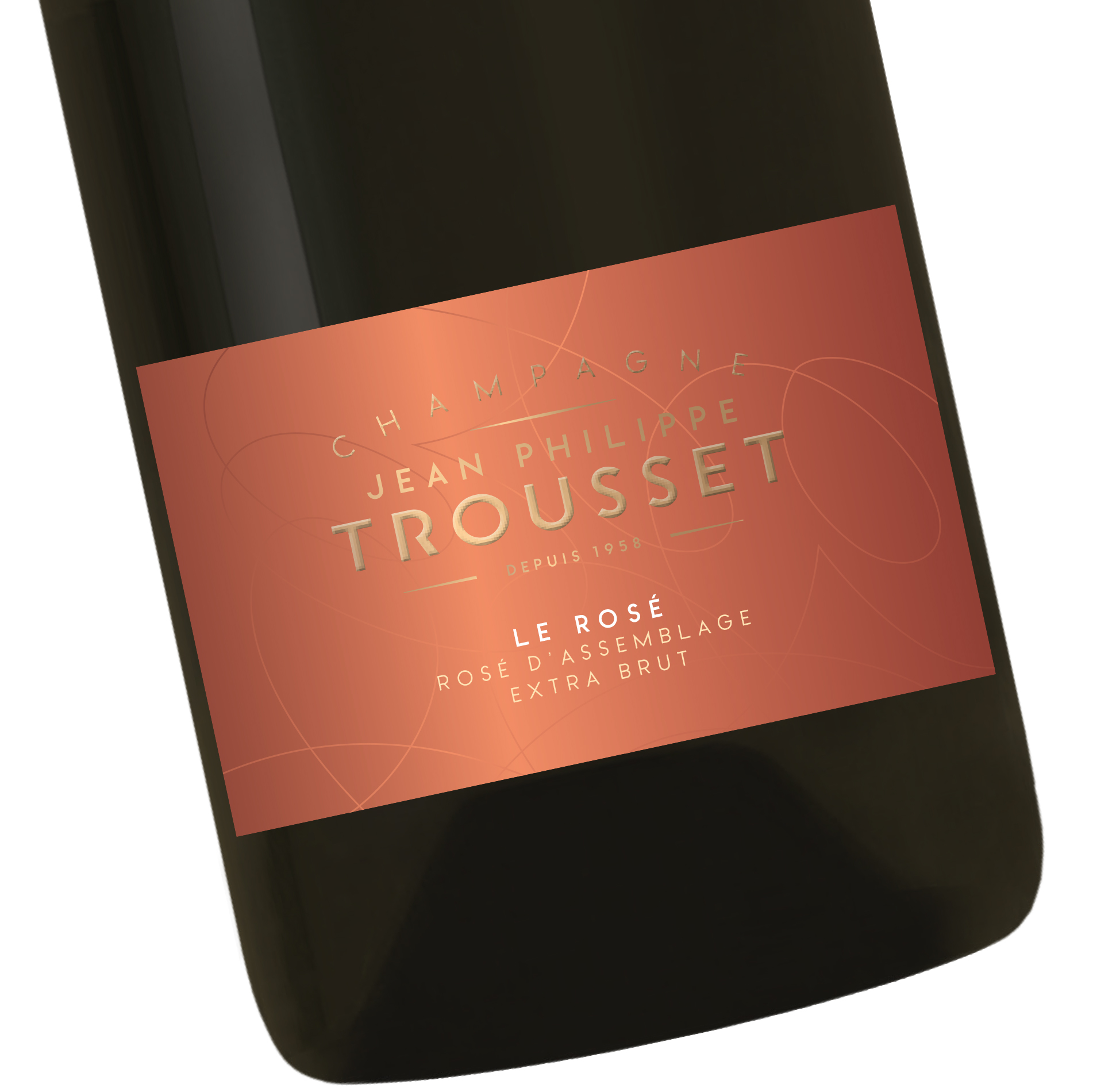
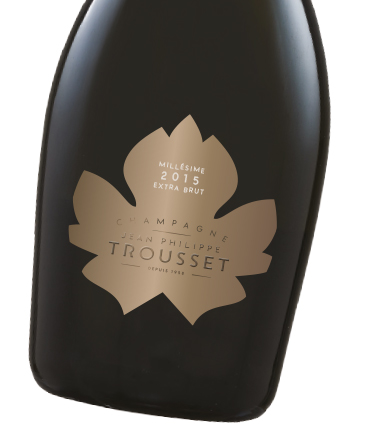
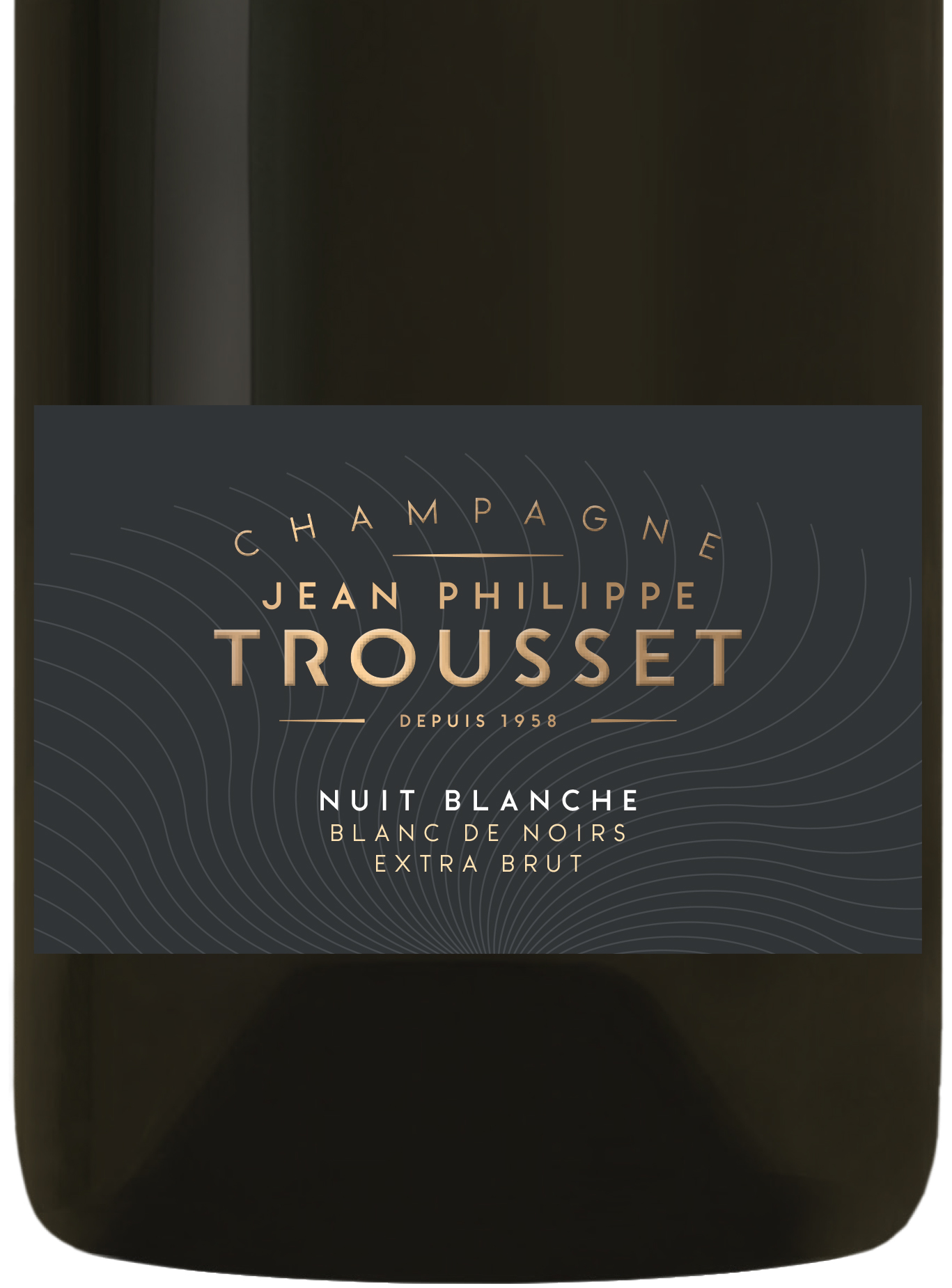
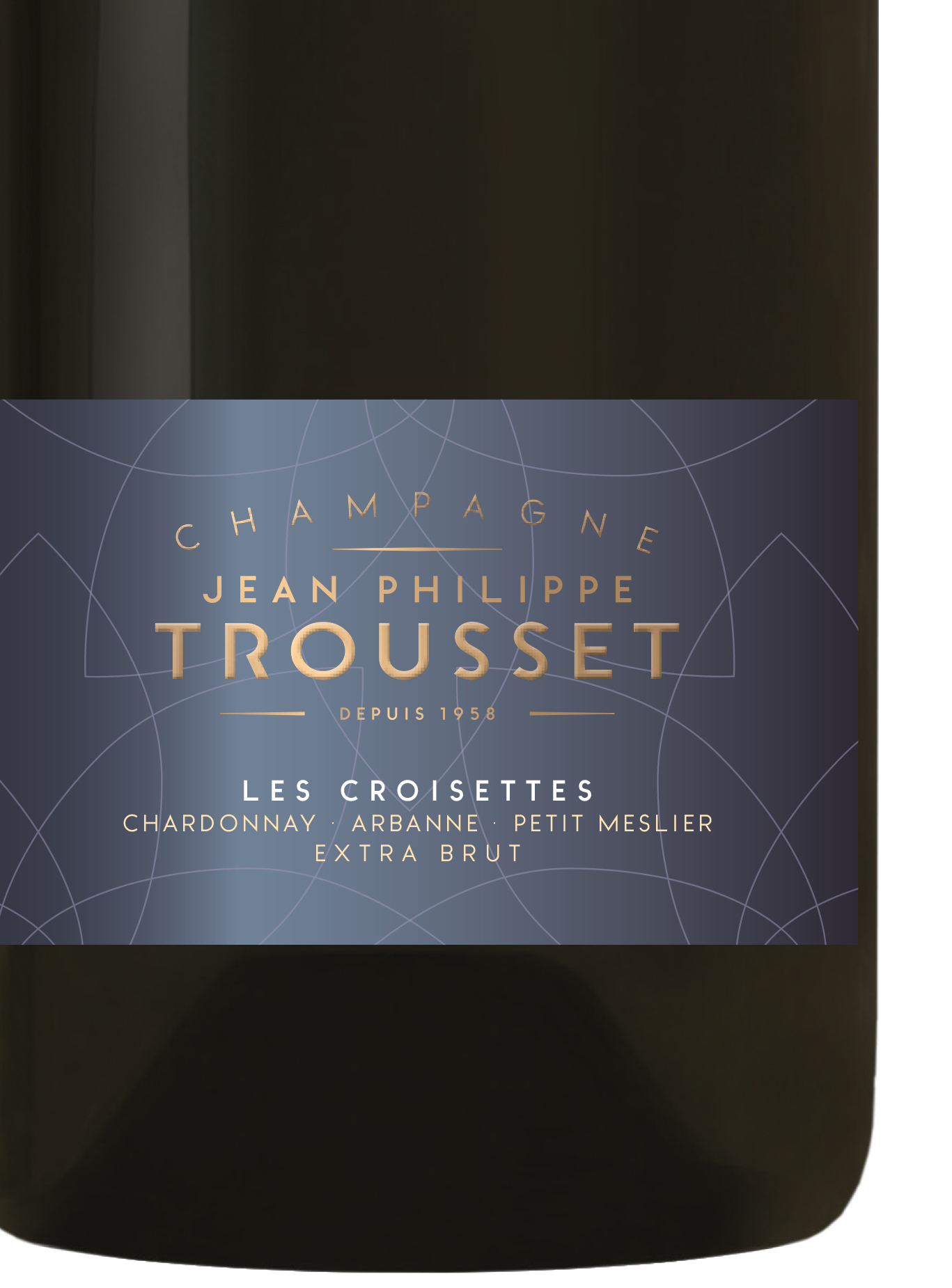
producer
rochet - bocart
THE GROWER — Mathilde Bonnevie is a young vigneronne perfectly mastering the art champenoise. The unprecedented Blanc de Noirs shows how the touch of Mathilde in the Rochet-Bocart wine house regales us with genuine gems. Mathilde also belongs to the Fa'Bulleuses, an association of seven champagne female connoisseurs and brilliant producers.
THE ESTATE — The Rochet-Bocart house was set up in 1956 thanks to Jaques Rochet and Claudette Bocart, who little by little started to transfer control to their son Michel. After completing his oenology studies, Michel then continued to develop the house champagne by adding his own personal touch and a new champagne rosé.
THE CELLAR— Rochet-Bocart is an independent grower producer namely a completely autonomous RM producer in all production phases. Phases which happen solely due to gravity from the pressing of the grapes in the classic 4.000 Kg. Coquart press before vinification for individual plots in small thermo-regulated vats. After the bottling, the champagne ages for over two years in the underground cellar where the rémuage (riddling) takes place with very rare and old manual gyropalattes.
THE VINEYARDS — The vineyards are found mainly in the Premier Cru village of Vaudemange, one of the four so-called White Pearls, namely the area of the Reims Mountain which is the most exposed to the east and sacred to the white variety in Pinot Noir terroir. However, Pinot Noir is not absent on the Rochet-Bocart property which boasts prestigious Verzy Grand Cru vineyards.
GRAPES
100% Pinot Noir
The Pinot Noir of the Verzy Grand Cru (in the northern part of the Reims Mountain) is cultivated and then turned into wine by the highly skilled hands of Mathilde, an expert not just in the vineyard but also in the cellar. Fermentation is carried out in small stainless steel vats with no malolactic fermentation. The champagne, an undeclared vintage, has a primary yeast fermentation of just under three years before being dosed at 3 g/l. An elegant, subtle yet intense champagne which is fresh and complex with a perfectly blended red fruit note and a burst of minerality. It has a lively, tasty and well balanced flavour.
rochet-bocart
blanc de noirs
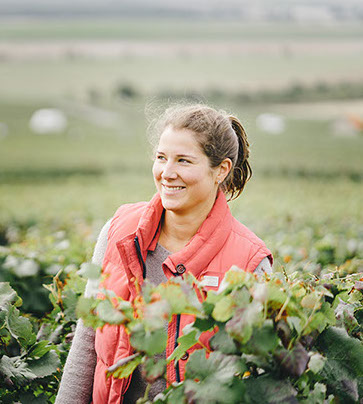
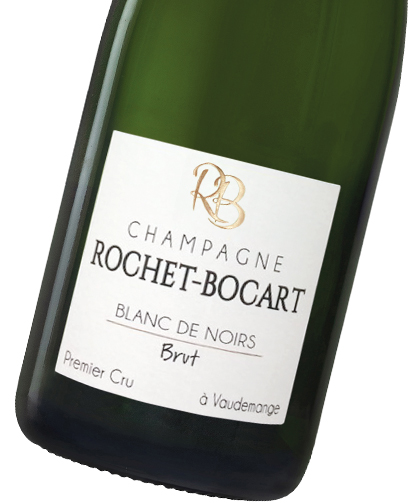
GRAPES
100% Chardonnay
Il primo Chardonnay in purezza di Mathilde, con le uve di una sola annata provenienti dalla parcella "Le Fossé Bocard”, a Vaudemange, vecchia ben 62 anni ed esposta a sud-sud/est. Vinificazione in cuve senza malolattica, oltre tre anni sui lieviti (ma è un millesimato non dichiarato) e dosaggio a 3g/l. Molto vivace, ha la freschezza e la vitalità dei vins clairs che esaltano letteralmente l'essenza dello champagne. Naso scintillante e pulitissimo con note di foglia di agrumi. Bocca molto elegante senza mancare di volume, legata a doppio filo agli agrumi con un bello sviluppo minerale.
rochet-bocart
blanc de blancs
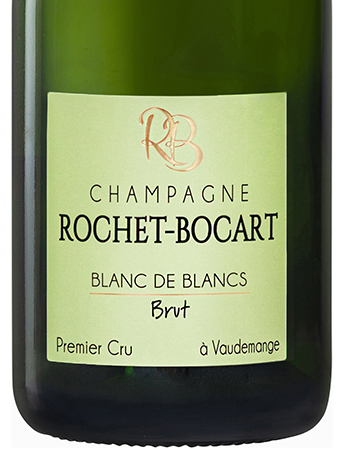
GRAPES
100% Chardonnay
Medesimo champagne però proposto anche come dosage zéro per il solo mercato italiano. Grande freschezza a pulizia accompagnano una bella sensazione di ricchezza legata agli agrumi gialli, anche in foglia, per un'espressione nitida e brillante. Buon volume, sempre in un avvincente contesto di pulizia e freschezza, ora con la salinità al fianco dei ritorni agrumati, di lodevole persistenza. Il gusto molto bilanciato non lascia intuire la natura di pas dosé.
rochet-bocart
blanc de blancs
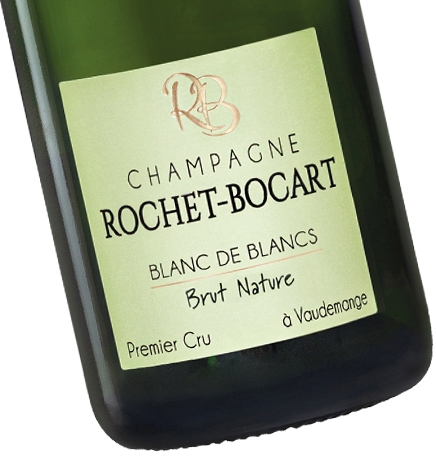
GRAPES
20% Pinot Noir in rosso
80% Chardonnay
Questo Rosé materializza i due territori di Mathilde, visto che alla base Chardonnay di Vaudemange è aggiunto il Pinot Noir di Verzy come vino rosso (rosé d'assemblage). I vini non hanno svolto la malolattica e, dopo il tiraggio, lo champagne ha maturato 2 anni sui lieviti. Dosaggio da extra-brut, inferiore ai 6 g/l. Olfatto vivace e fresco, con un'espressione che privilegia gli agrumi rossi e la mineralità ai piccoli frutti rossi di bosco. Elegante e con una buona tensione, mai eccessivamente dolce di frutto, bensì saporita sui ritorni agrumati e gustosa nella vena minerale.
rochet-bocart
rosé
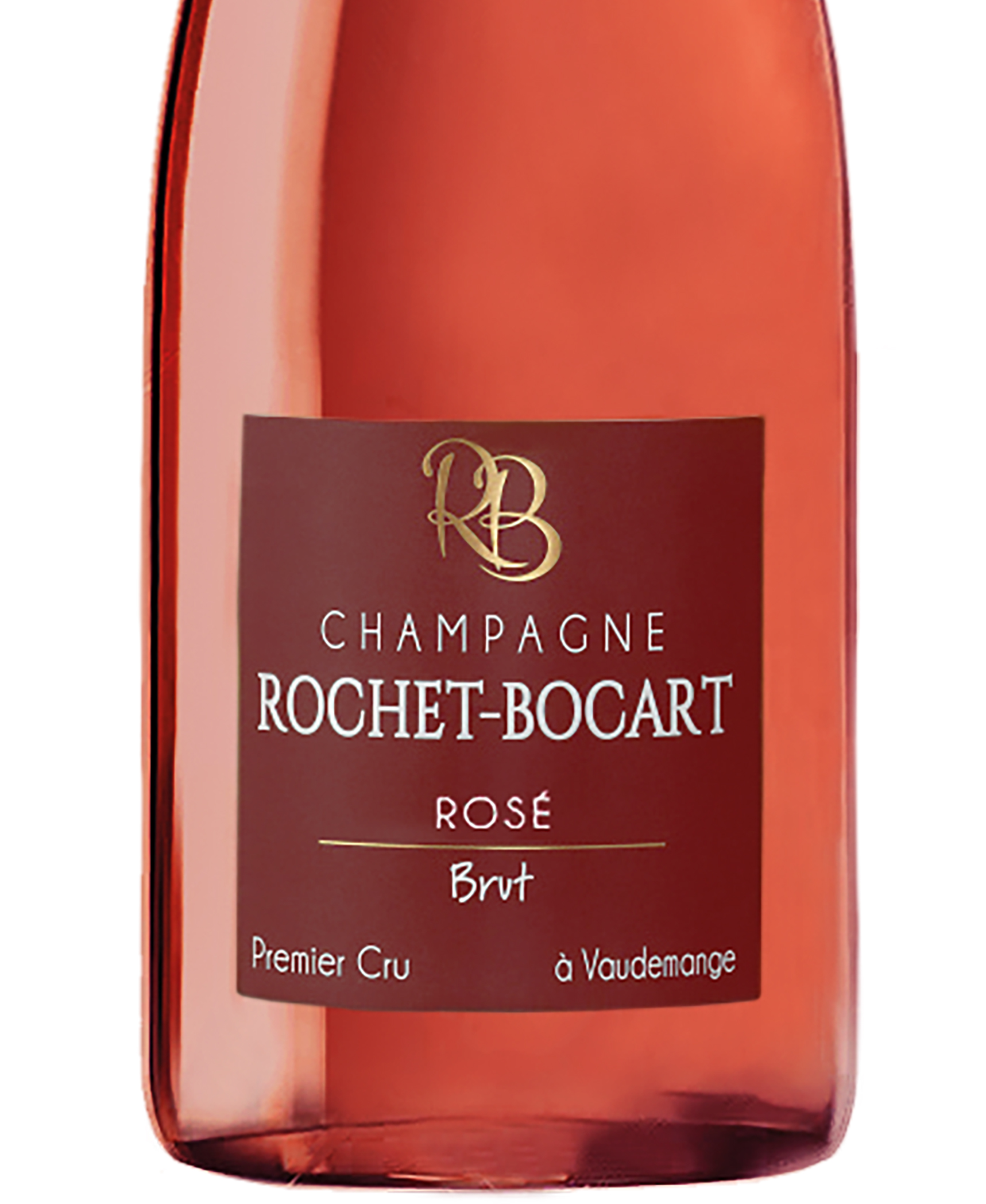
producer
gallois - bouché
THE PRODUCER — The young Guillaume graduated in oenology in Reims in 2013 and in the same year decided to start up the production of his own champagne. It's just the first step in the journey leading Gallois-Bouché to becoming a récoltant-manipulant, namely a producer making champagne solely from his/her own grapes. Guillaume is also an oenologist managing the disgorgement line and a member of the tasting committee of a leading champagne house.
THE ESTATE — The family's vineyards are located on chalky soil slopes and cultivated by Guillaume's father. They are characterized by an exceptional maturity so much so that they never need to turn to the chaptalization practice.
THE CELLAR — The current production at Gallois-Bouché is highly artisan and performed in the tiny cellar under the residence. At the end of 2017 Guillaume acquired an old building in Vertus with many underground cellars which when restructuring is complete will allow to not only work more efficiently but also to increase the production.
THE VINEYARDS — The Gallois-Bouché family own 3.5 hectares in Vertus, a Premier Cru village in the legendary Côte des Blancs. This area is not just historically linked to the Chardonnay grape but also to the Pinot Noir, which for centuries has been cultivated in the most western parts of the Cru and on the steepest slopes. This is where the family's Pinot Noir vineyards are to be found, while the Chardonnay vineyards are in the best area of the Cru, bordering on Le-Mesnil.
scheda pdf
GRAPES
34% Pinot Noir
66% Chardonnay
Grapes selected from the owner's vineyards in Vertus and the fruit of a single harvest. The champagne is aged on yeasts for no less than 42 months and this take place with a cork stopper (bouchon liège) before the manual rémuage (riddling) and disgorgement. The dosage is equal to 2 g/l. From the brilliant golden colour and the fine bubbles, it immediately wins you over for its classiness and vivacity. It is rich and full bodied in addition to being extremely well balanced in roundness and intensity, concentration and elegance with a vigorous progression from sweetness to dryness marked by an aftertaste of minerality and citrus tones. A complex and sophisticated champagne which is immediately pleasing.
gallois-bouché
cuvée fût de chêne millésime
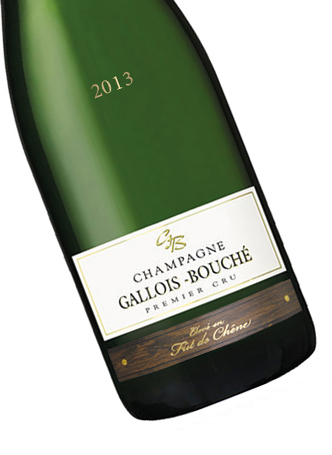
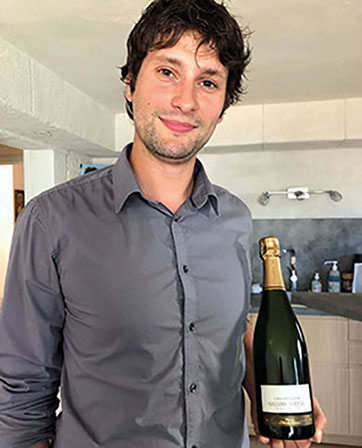
producer
eric taillet
THE PRODUCER — Eric può essere definito a ragione "l'artista del Meunier", varietà che conosce a fondo e ama, tanto da aver creato l'associazione Institut Meunier. Eric rappresenta la quarta generazione di una famiglia champenoise di vigneron a Baslieux-sous-Châtillon.
THE ESTATE — Nella Vallée de la Marne possiede 5,7 ettari (certificati HVE e Viticulture Durable) piantati su suoli argillo-calcarei dall'esposizione eccezionale. Le primissime bottiglie arrivano con il nonno materno negli anni '50, ma lo champagne Taillet nasce con il padre Daniel nel 1961.
THE CELLAR — In cantina pressa tradizionale, ma utilizzata con i piccoli segreti di Eric, vinificazione in larga misura in acciaio, in piccole cuve con lieviti naturali, e tiraggio.
THE VINEYARDS — Le vigne hanno mediamente 45 anni e il Meunier la fa da padrone con il 90% delle piante.
scheda pdf
GRAPES
100% Meunier
Il biglietto da visita del vigneron, ottenuto dalla selezione di uve provenienti da tutti i vigneti di famiglia, vinificate sia in cuve che in barrique, senza malolattica. L'assemblaggio è arricchito dal 30% di vini di una réserve perpétuelle creata da Eric. Lo champagne riposa circa 24 mesi sui lieviti per poi essere dosato a 1,5 g/l. Al naso colpisce subito per freschezza ed eleganza, mentre la bocca è sottile, succosa e tesa, con uno splendido finale asciutto di mineralità. La rivincita del Meunier, all'insegna della piacevolezza.
eric taillet
éxlusiv't
scheda pdf
GRAPES
100% Meunier
Uve provenienti da due parcelle di Baslieux, una esposta a nord e l'altra a sud-est, su suoli differenti. Fermentazione mista acciaio/legno, unione di due annate, una di tensione e una di frutto. Lo champagne fa poco più di due anni sui lieviti chiuso con il tappo di sughero (bouchon liège) ed è dosato a 2 g/l. Bocca precisa, netta e minerale. Finale pulito e nettissima salinità. Estremamente piacevole senza mancare di solidità da grande vino.
eric taillet
bansionensi
scheda pdf
GRAPES
90% Meunier
10% Chardonnay
Le uve provengono dalla vigna storica piantata nei primi anni del 1900 e ripiantata, successivamente, nel 1986 a cui si è andato ad aggiungere anche un po' di Chardonnay. Fermentazione per buona parte in legno, assemblaggio di due annate e oltre 4 anni sui lieviti come bouchon liège. Lo champagne non è dosato. Al naso è molto fruttato, ma non dolce. In bocca rivela note di fiori d'arancio e di susina, in un infinito gioco di dolcezza e asciuttezza sapendo però essere anche rinfrescante nella sua scia salina. Eric dice la sua anche con l'assemblaggio...
eric taillet
sur le grand Marais
scheda pdf
GRAPES
100% Meunier
Uve provenienti da una vigna di 26,12 are a Montigny. La vigna è disposta di traverso rispetto al coteau per ricevere la massima insolazione. Dopo la limitazione della resa in pressa, la fermentazione avviene in legno, la malolattica è svolta, e lo champagne è il frutto di due annate in parti eguali. Viene dosato a 1,5 g/l dopo aver riposato quattro anni sui lieviti come bouchon liège. Produzione limitata a circa 2.000 bottiglie. Al naso, lo champagne risulta ricchissimo e non meno raffinato, con una freschezza balsamica e sentori di spezie ed erbe aromatiche. La bocca colpisce per succosità e carnosità. Il finale appagante conferma lo straordinario valore di questo champagne unico. E, purtroppo, raro…
eric taillet
le bois de binson
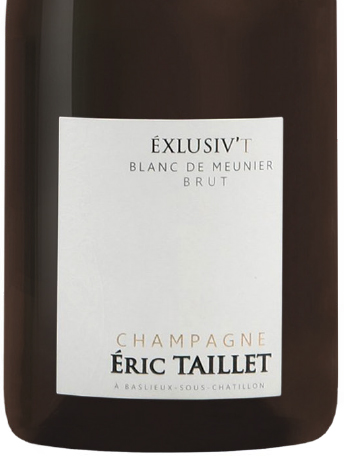
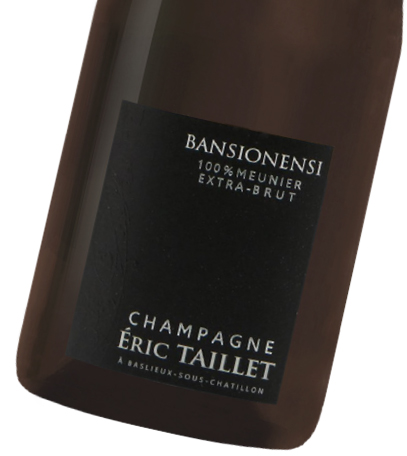
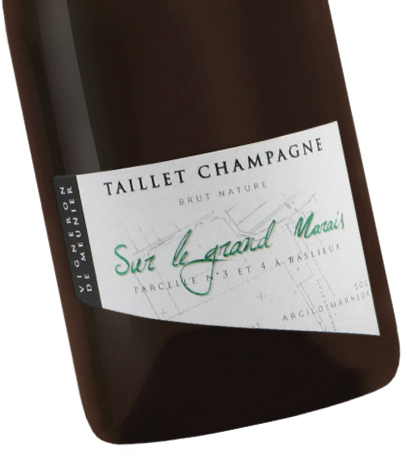
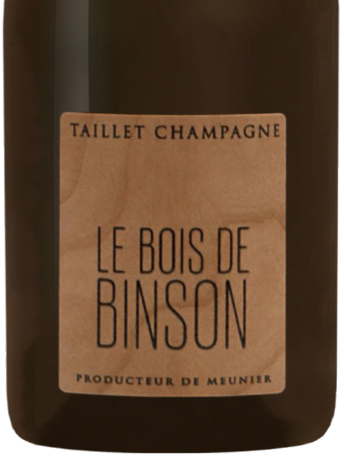
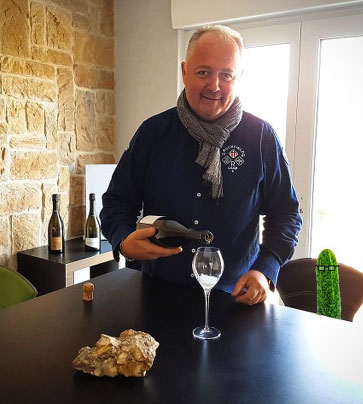
a history of passion for champagne
A selection dedicated to Italy has been chosen by Alberto Massucco, entrepreneur and champagne connoisseur
who has been won
over by the freshness of
Trousset-Guillemart, the energy of Mathilde and the talents of Guillaume.
The champagnes selected by Massucco can be found in starred restaurants and leading wine stores.
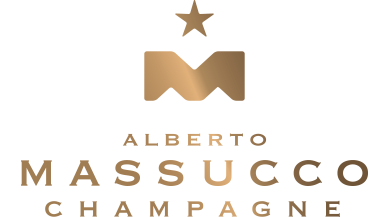
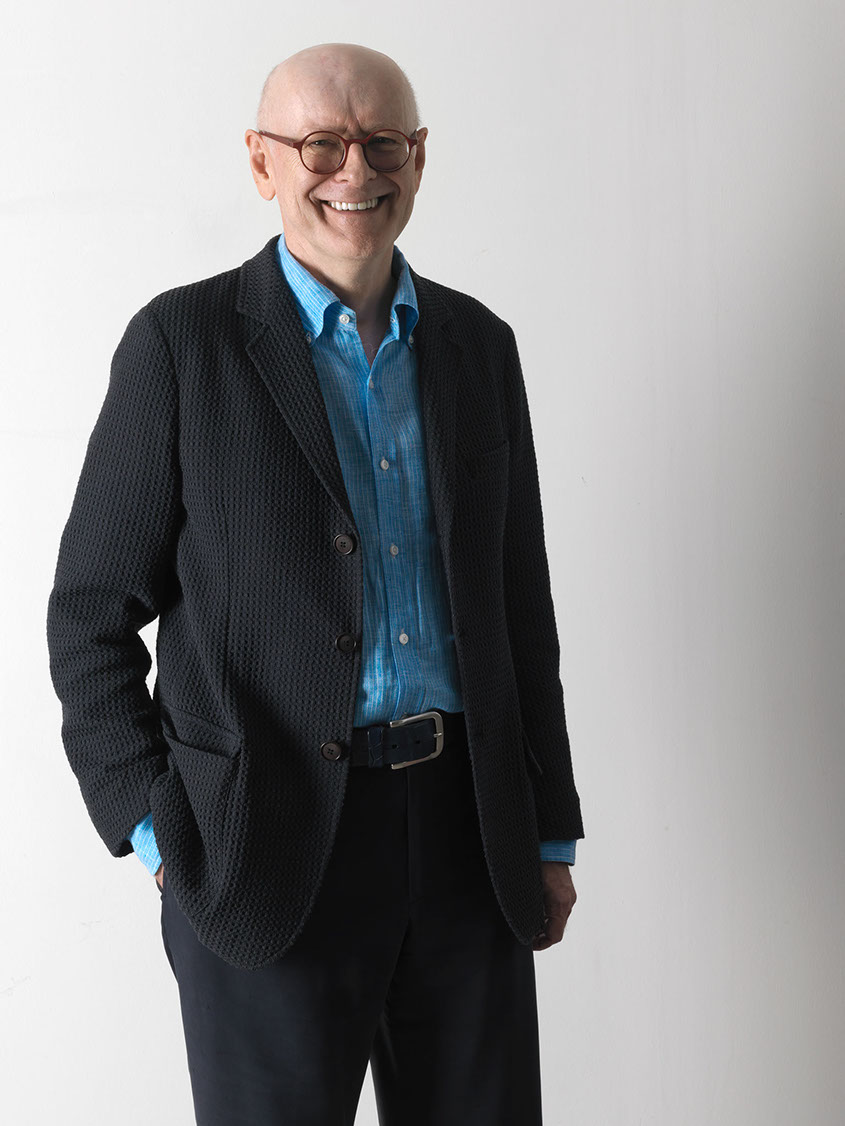
CONTACTS
CINZIA ZANELLATO
Località Piova 98 • 10081 Castellamonte
T + 39 0124 518555 M + 39 345 3941326 info@albertomassuccochampagne.it
